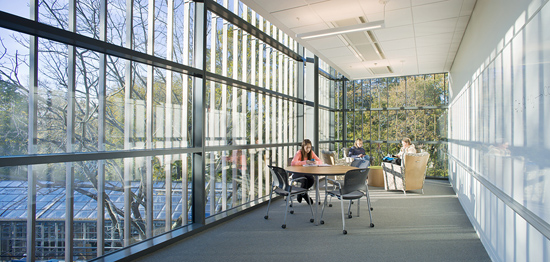
In response to the AIA’s blog off prompt, “What does architect as leader mean to you?” our Alison Duncan writes about the quiet leadership demonstrated by architects.
When most of us envision a leader, we see someone who is at the forefront of their group, field or profession; someone who is visible to the larger community advocating for the needs and desires of our profession and the role that we play as part of the greater good. While these types of highly visible leaders are a great benefit to our profession and community, not every architect has the opportunity to be the outspoken leader. When thinking about architects as leaders, I want to discuss the quiet leaders.
Architecture is a unique endeavor in that our products, the spaces that we create for our clients, our users, and the public, must speak of our ideas and intentions without the benefit of an explanation or often any kind of record of what the designer was thinking. Of the people who may use our spaces during the life of a building or public space, only the smallest fraction of those people had the benefit of being part of the design process with the architect. Most of the time only the design team, owner and a small group of users are able to look at a space and reflect on the myriad of decisions that went into the creative process of shaping that space. For the rest of the people who encounter designed spaces wherever they go, the architect doesn’t have the opportunity to explain how we intended the space to improve quality of life, or operate more sustainably or create more collaborative interactions among people. The challenge of architecture is to make spaces that speak for themselves, impacting people’s everyday lives from the background, quietly.
Most architects have the opportunity to be quiet leaders, but not silent ones. Every time we have the opportunity to guide our clients to the right solution for a design problem – renovating and adding to an existing historic building instead of building on a greenfield site or naturally ventilating offices, classrooms and public spaces. We work to ensure lounges and informal gathering spaces where collaboration and learning occur are included with pride of place in a space program or we site two new buildings so they create a new precinct on a campus that allows for greater connections to the existing circulation routes and creates outdoor spaces where there was previously a wall of buildings physically and psychologically separating campus spaces. All of these types of design decisions advocated by the architect to the client go above and beyond the basic needs of a project are what make the biggest impact in improving the quality of our built environment. These may not be design decisions that are consciously recognized by the public, or even sometimes the clients, but they are nevertheless incredibly important acts of advocacy on the part of architects for better designed spaces and buildings that impact people’s everyday lives and architecture’s impact on our world.
Of course as part of the effort to continue to ensure the relevance of our profession to our society at large, we need the front line leaders to be the face and voice of our profession. But we should also recognize the leadership of all the architects advocating for a better built environment simply through the strength of their design ideas, even if they are speaking a little more quietly.


